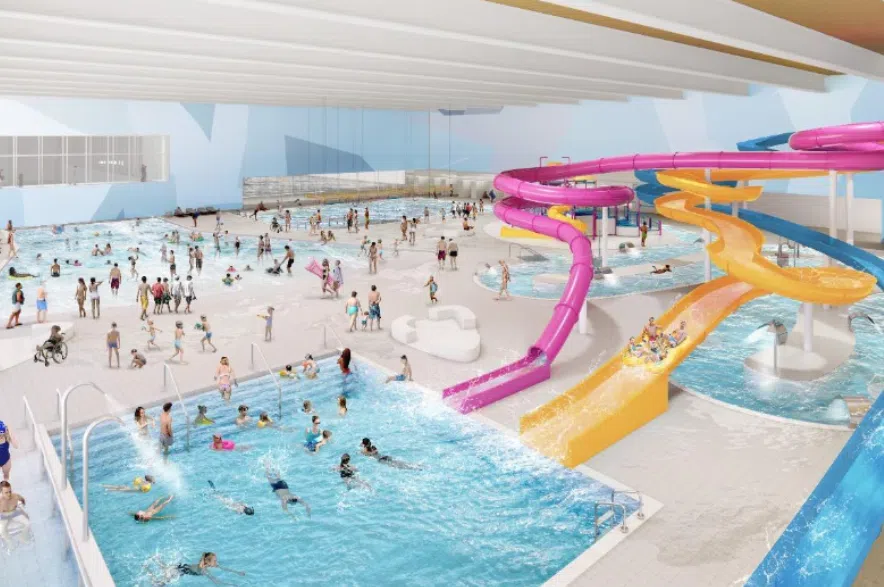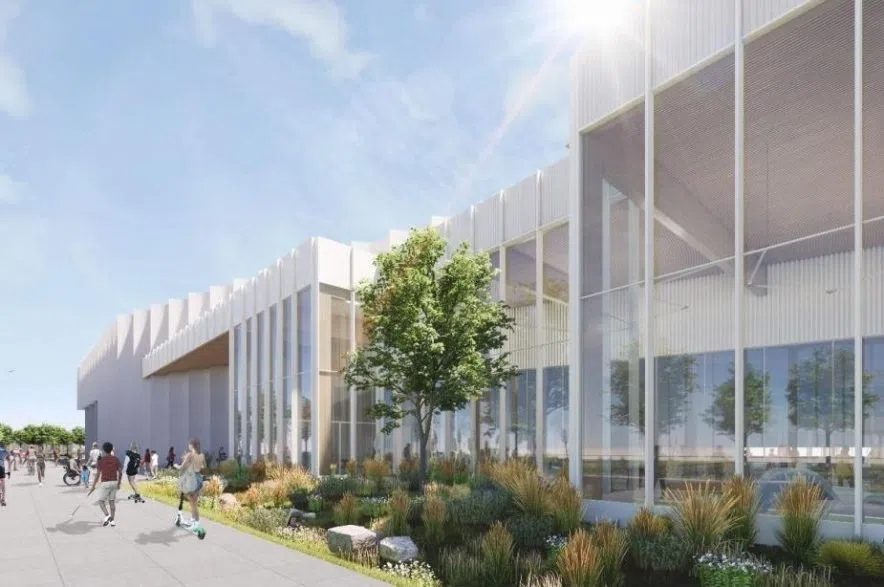The question of just how much the city will pay for a new aquatic centre is to be decided at a later date.
At Wednesday’s executive committee, council passed a referral motion that would push the decision from Aug. 14 to Oct. 2.
Costs for the project have ballooned from $160.7 million capital plan up to $245.1 million.
City administration said the $84.4 million increase comes from inflation and increased scope clarity.
While support for the pool was popular among councillors, many expressed concerns about the costs.
Coun. Jason Mancinelli said the pool would be a regional asset. It could be used by neighbouring communities but felt Regina would be shouldering the increased financial burden.
“I would rather write a motion to exit the whole pool than allow the costs to escalate without partners to go through this,” Mancinelli said.
“Regina really needs a pool but that doesn’t mean I think that I can afford to tax all the residents of Regina while all the surrounding communities grow and expand and we pay for it.”
For this reason, Mancinelli decided to support Mayor Sandra Masters’ referral motion.
It was approved 7-2.
Coun. Bob Hawkins said further engagements should be done with the University of Regina (which also has an aging pool) and surrounding municipalities.
When it was approved in March 2023, the aquatic centre was intended to replace the Lawson Aquatic Centre. It has about five years left in its lifespan. However, it was revealed on Wednesday to council the Lawson is no longer required to be decommissioned to receive funding for the project.
Masters’ referral outlined pushing the decision back allowed for the council to approach both federal and provincial governments to discuss and advocate for inflationary increases to the Investing in Canada Infrastructure Program (ICIP) as well as help with finance modeling.
Masters said she did not wish for the City of Regina to take on $150 million in debt for the project.
Council also voted to increase request approval from the Saskatchewan Municipal Board (SMB) to increase its debt limit from$660 million to $890 million. The recommendation for this request also included a designation to negotiate with financial institutions to obtain long-term financing of $150 million plus any related debt or interest.
The city’s original contribution to the project was supposed to be $81.5 million when it was approved last year.
Masters didn’t rule out the possibility of repurposing the Lawson while talking to reporters after the meeting, acknowledging that its fate is open-ended. She floated the idea of perhaps using it for indoor court space.
Support for aquatic centre
Marj Walton with Swim Saskatchewan expressed her strong support for the aquatic centre as a delegate on Wednesday.
She said in addition to being an inclusive community hub, the aquatic centre would be able to host high-level events hosting teams from across the country, which the Lawson isn’t currently capable of.
“When a new aquatic facility is built, it is appealing for athletes and coaches from across the country to want to attend competitions there,” Walton said.
“Currently, there are swim clubs from across the country that don’t come to competitions held in Regina due to the current facility. We don’t want that to continue with the new pool, however, we need to build it right. We want the new pool to draw clubs to want to come to competitions in Regina.
Scope of project
During and after the meeting, Masters expressed frustration with the lack of investment in the city’s Recreational Master Plan since 2010. As well as what she called a lack of planning for aging assets.
“It was cheaper 20 years ago but it won’t be cheaper than today,” she said of the aquatic centre.
“Investing in it knowing we need it, knowing we’re far behind other cities of our size as it relates to aquatic centres — it’s easier to do under one roof than to build two of them. (As in) build this one and then just need another one 10 years from now.”
Masters said she hopes to get many years out of the new proposed facility but also acknowledged that in 25 years from now, the city’s growth may necessitate another centre.
“My job is to invest in a city infrastructure that I will never enjoy,” she said.
“My kids are all grown up, so the swimming pool isn’t for my kids anymore, these are for my grandkids or your grandkids or what have you. And so, not being stuck in a four-year political election cycle, to actually have that future, forward, long-term look — it’s tough because you’re making decisions that (make) people want to shake their fist at you and you understand, but we own these assets, we’re responsible to provide these facilities, we own the roads and the equipment and all of those things. Our job is to make sure that we’re managing them responsibly.”













